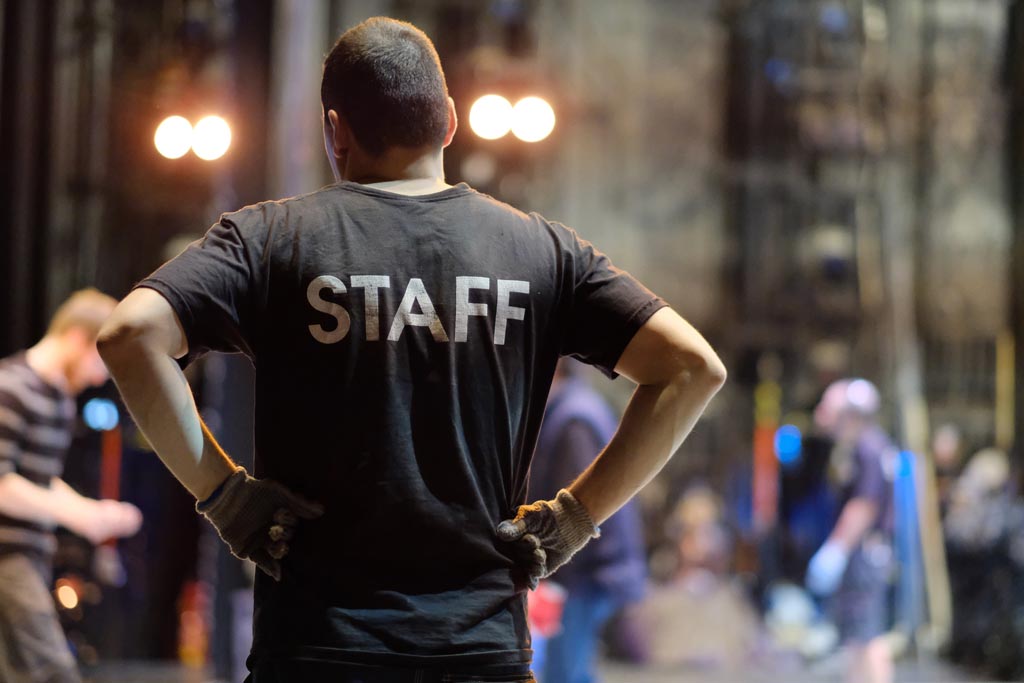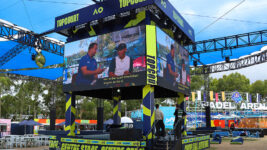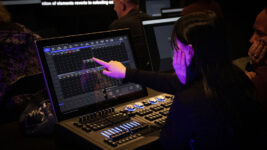BACKSTAGE
23 Mar 2023
Who’s in charge here anyway?

Subscribe to CX E-News
Over millennia, our societies have developed systems for managing the pecking order of people. Witness autocracy, plutocracy, oligarchy, and the least worst for now, democracy. Businesses have their own structures, dependent on how the owners and managers choose to run them. Some even resemble military organisation in their arrangement (if not execution).
Likewise, each show type has its hierarchy. Theatre roughly goes thus: director > stage manager (SM) > cast > crew. Musical theatre adds in the musical director (MD) who aids direction in rehearsal and onstage. They will work alongside the SM, who controls physical and technical logistics while the MD ensures that the performers are on song musically. Many solo artists with backing bands also follow this model. Touring adds a tour manager (responsible for the whole tour and particularly artists and performers) and production manager (responsible for all technical aspects and tech crew) alongside a plethora of assistants, growing in number the larger the show gets.
Technician wise, there is a food chain too. FoH audio has always been the glory role but lighting and video are now equally important. Large concerts are now so multi-disciplined that a show director might be employed to oversee everything.
Show control adds a layer of consistency and predictability to the sequencing and triggering of events using a dedicated controller module. Just where this fits in and when it is used is unique to each show. First, it requires budget. Budget to hire the control gear and budget to extend rehearsals to fully test show control in action.
Installations
Less set-in-stone are the pecking orders in installed electronic integration. Setting a control hierarchy was relatively easy just ten or so years ago. Use Dynalite or CBus to do all the low level grunt work and direct interfacing with lights, security and HVAC, then slap the funkiest AV controller you could afford (Crestron, AMX, Control 4, etc) over the top and hey presto – all sorted!
This approach meant omitting low level devices or sub-systems from the Jetsons Integration Plan ™ and accepting voice assistants as nothing but music servers or web searchers. Robot vacuum cleaners be damned.
Commercially, the building management systems like KNX and Modbus stood on their own, and the boardrooms got all the swanky touch screens and AV distribution. But both ends of the spectrum were far from seamlessly integrated. This space is rapidly evolving and better interconnectivity between layers is seeing far better integrated buildings.
Theme parks have an interesting mix of all of the above. Regular routines of lighting, pyro and animatronics are often directed by embedded controllers for each sub-system. Increasingly, these report back to a top layer control system or portal for user access and system metrics.
Control precedence
The domination tendencies of the various systems and sub systems have taken another turn with the increasing penetration of IoT and now advent of Matter (a royalty-free proprietary standard for home automation backed by big players including Google, Amazon, and Apple), enabling, in theory, all manner of auto-comms between devices. While human institutions focus on chain of command, electronic control relies on order of precedence.
But which device takes priority? Which system does what and when? What is the optimal architecture for integrating proprietary gizmos? With this sector evolving rapidly, AV designers need to stay open minded about change.
Much like the backstabbing, empire building ladder climb of corporate upward mobility, each electronics vendor wants their kit at the heart of everything. Designing and architecting whole building electronica has simultaneously become more powerful and more complex. Yet this complexity brings several drawbacks:
- Lack of simple centralised UI (without major programming)
- On again / off again comms / status updates
- Designing the most cost-effective control strategy
- Reliability / troubleshooting.
- Talking across eco-verses
- API limitations
Smart designers will let each device take care of its native functionality. In the human world, this is clever delegation: marrying a unit’s most efficient functionality with its role. If only personal ambition, greed and over-reach could be mitigated for the greater good, societal systems might work as well as our building electronics. As system architect, you can choose to use the top layer, the one that the fickle humans paying for all of this will interact with, to do the heavy lifting, constantly polling and probing, or just treat it as a reporting layer, leaving the grunt work at the device end where it is optimised.
Like meat space organisation, electronic integration requires establishing robust reporting mechanisms between devices and systems. Unlike with humans, once these pathways are established, they will work forever. Spreading the load across devices is the sensible play. It also favours redundancy, as losing one critical component doesn’t bring the whole system down.
Sitting on top of the world
Increasingly, the top layer – the one that makes the major decisions about what is controlled and when that is reported – is moving to SaaS (Software as a Service) vendors. A good example is Sydney based startup Innomate, now making major inroads into that space, both locally and internationally. Other integrators are developing their own SaaS. For many installation companies, webOS and Matter will be important focuses in the near future.
The top layer of show control has historically been timecode driven, based on either SMPTE or MIDI clocks. DMX has taken a recent lead, allowing complex trigger routines to be launched by the LD. Where they fit into the show hierarchy will be dependent on both the type and scale of the production.
Theatre, concert, broadcast, theme parks and fireworks all have similar but differing needs when it comes to automation. In theory, it would be possible to control any one of them from the same platform – it’s all just relays and ICs after all. But, safety restraints from dangerous conditions necessitate dedicated controllers for items that could injure someone, let alone items designed to explode. Further, a human element is often required to get timing that feels in tempo with the show.
Not losing control
Underpinning much of the software-led control is AI, or machine learning. This is fast being embedded into a lot of our gear and its power only increases with time. But it’s proving fallible or prone to false positives, so its human masters still need to be there, just in case. Particularly where the likelihood of personal injury is high (like self-driving cars, moving set pieces, or pyrotechnics).
AI won’t take your jobs (yet). Why? Because: until it is 100% failsafe, an operator is still required; people are in charge of designing and developing the gear and seeding and structuring the AI; and maintenance will ever be required. Until robots get better at this last function than us, we’ll always have gigs fixing broken stuff.
Control what you can, ignore what you can’t. Both globally and locally. Professionally, take the same approach. Electronically, design your systems so that they complement and enhance each other. Personally, take charge of your destiny and do your utmost to exert a positive influence on the environment around you.
There’s enough conflict and miscommunication going on in the world. No need to add more to your home or work existence.

Subscribe
Published monthly since 1991, our famous AV industry magazine is free for download or pay for print. Subscribers also receive CX News, our free weekly email with the latest industry news and jobs.






